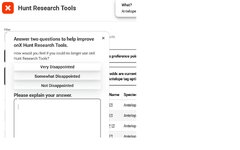Oregonhuntrboi
WKR
- Joined
- Jan 27, 2022
- Messages
- 991
can I any current users comment on the updates status of this ?
Follow along with the video below to see how to install our site as a web app on your home screen.
Note: This feature may not be available in some browsers.
Exactly right. HRT feels like such a bottom of the list project I’m still convinced that a third party is writing this code with minimal oversight from anyone who has any experience with hunt draws.Some has been fixed. Some has not.
I think it's easier to sell a product like this at a profit when you just throw up data and let your paying customers QA the software design and create the "bugs list" for you. Rather than employing staff that design and catch bugs prior to release. Some of the logic errors have shown a very basic lack of understanding of the odds nuances in western draws.
I just read through the draw reports that the states put out for free and make a decision off of that.So I’m hearing go with gohunt ???
Been doing that. Honestly just a lot for my mind to keep track off doing multiple states at the same time so was hoping for a useful tool to help streamline it.I just read through the draw reports that the states put out for free and make a decision off of that.
I just read through the draw reports that the states put out for free and make a decision off of that.

They don’t have a quick and dirty sort either. And they also have data problems. And map problems.So I’m hearing go with gohunt ???
